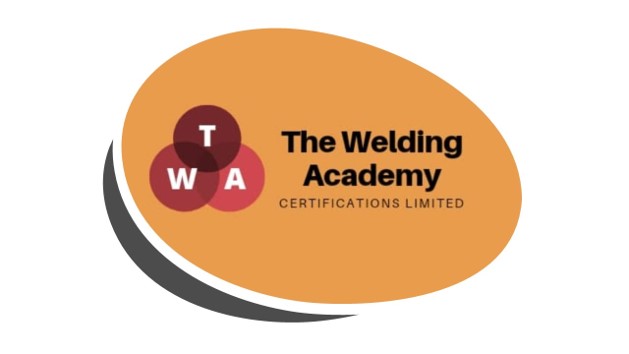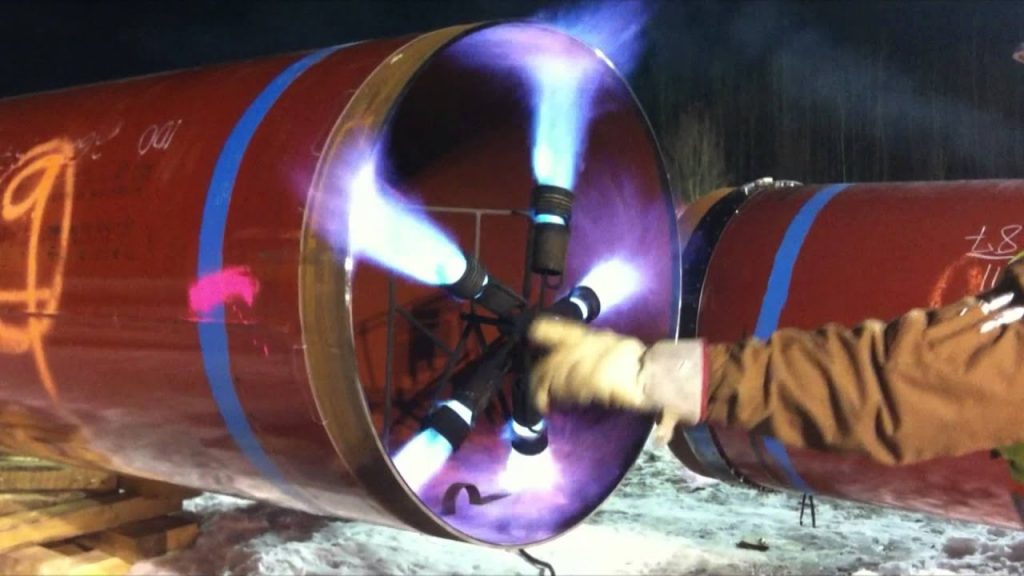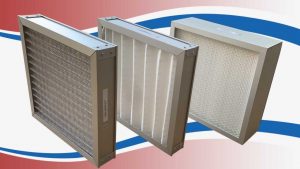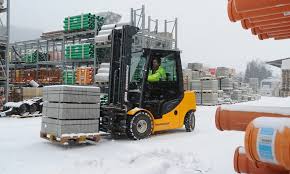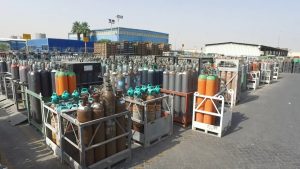In a nutshell, you can say that preheating prevents cracking in the material and/or the weld. Since we are talking about various metals and various welding processes, the practice is of course, much less straightforward. In this article, we summarise the most important reasons for preheating, and we give an insight into the negative consequences that preheating can have.
Reason 1; weld crack prevention
Preheating reduces the cooling speed of the weld bead and its immediate surroundings. In particular, steels with a higher proportion of alloying elements (higher carbon equivalent) are sensitive to the formation of a brittle structure. In combination with tension stress and any hydrogen present, this can lead to cracking. The selected preheat temperature, during the manufacture of the entire weld, must be maintained as a minimum. An excellent tool to determine the preheat temperature is the EN 1011 standard.
Reason 2; limiting weld shrinkage
By preheating, we can reduce the shrinkage of the welded joint. With no or limited restraint, the shrinkage will cause deformation. In the case of full restraint, this will result in tension stress. And, as indicated above, in combination with a brittle structure and any hydrogen present, this can lead to cracking.
Reason 3; prevention of lack of weld penetration
In the case of metals with high thermal conductivity, in some cases, the arc cannot melt the base material, which results in bonding errors. Here, preheating can be a means of melting the base material near the weld bead, so that a good connection can be established.
Reason 4; reducing of H2-content (HDM)
It is claimed that preheating has a beneficial effect on the escape of any hydrogen present in the weld and the heat-affected zone. However, the impact is minimal, and the preheat temperature must then be at least 150 – 200 °C.
Welding Preheating; Negative effects
It is essential to also take into account the possible adverse effects of preheating. To be able to assess this accurately, knowledge of the materials to be welded is required. These are the five most typical adverse effects of preheating;
- In the case of a ferritic structure in steel (especially in the case of corrosion-resistant steel), undesired granular growth may occur, giving rise to embrittlement.
- Austenitic stainless steel increases the chance of chromium carbide formation, which results in the risk of intergranular corrosion.
- In the case of thermomechanically treated high yield strength steel (so-called TM steel), this treatment is partially undone, as a result of which a decrease of the yield strength can be observed (softening).
- In the case of duplex stainless steel, too much ferrite will be formed, which has a negative effect on the corrosion resistance.
- In the case of metals that have obtained their mechanical properties using precipitation hardening, the precipitates can grow, which leads to embrittlement.
When setting up a welding procedure, a well-considered choice must, therefore, be made between preheating and non-preheating. If a decision is made to do so, the next question is what will be the preheat temperature. The selected preheat temperature is the minimum temperature at which the welded joint to be produced must remain during the entire production of the weld. In most cases, the weld procedure sheet will include all of the conditions including the preheating. The Welding Academy can help with all Welder Coding Qualifications.
Author – Piet van der Horst
In 1970 Piet made welding his trade en since then he never stopped learning about that trade. By now he is well past his retirement age, but not welding is still not an option for him. It does not just work, it is a passion.
